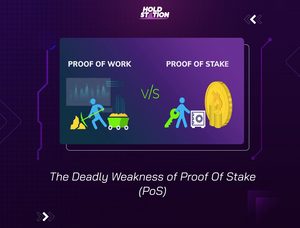So nearly 2 weeks have passed since The Merge event took place successfully, Ethereum 2.0 has completely removed the Proof of Work mechanism to switch to the Proof of Stake mechanism. Everyone expects that after converting to a new operating model, Ethereum will have a big transformation with the expectation of leading the bull market again. But the reality seems to go against the expectations of the majority when after The Merge the price of $ETH did not increase but even fell deeply. Partly due to the bad macro situation, another part is the short-term profit-taking trend of investors with the "Buy the rumour, sell the news" mentality. To understand, see, and appreciate the long-term potential of $ETH, investors and users must understand the strengths and weaknesses of $ETH's new operating model.
Investors and users may have read and heard a lot about the strengths of the new mechanism such as scalability, transaction speed, etc. However, there are always two sides to everything. Today Holdstation will point out the fatal weakness of the PoS mechanism that all investors or users must know.
Looking back at the reason ETH upgraded to ETH 2.0
Let's go back to ETH 1.0 with PoW mechanism. With the PoW mechanism, users or investors have heard no less than 1 time about mining. True to its name, this mechanism simply understands that it will use high-configuration computers to solve problems and receive a reward of ETH when successfully solving a problem. Miners take on the role of validating transactions and ensuring the safety of the network without the intervention of the owners of the miners. However, over time, this mechanism increases the difficulty of the problems (Hash rate), leading to the higher requirements for the configuration of the excavators and also consuming more power. slow down the processing speed of transactions.

For example, Bitcoin can only handle about 5 transactions per second, or Ethereum can only handle about 20 transactions per second, whereas Near Protocol with Proof of Stake mechanism is currently capable of processing. handle up to 100,000 transactions per second.
Because of that, transactions on the network of Ethereum or Bitcoin take a lot of time and are extremely expensive.
To overcome the above weaknesses of the PoW mechanism, the PoS mechanism was born. Replaced by miners are users called Validators, who will have to deposit a certain amount of money required by the network into smart contracts, and are responsible for verifying transactions. In return they will be rewarded for verifying successful transactions. In case if the Validators are found to be fraudulent, they will be penalized by taking away the amount they deposited. This mechanism has overcome 3 important weaknesses of PoW which are time, cost and energy.
Deadly Weakness
At a glance, everything is almost fine when the most difficult problems have been solved, even Ethereum is the one pursuing the conversion to PoS into ETH 2.0, so why is there any weakness?
However, the story behind the strengths of PoS is the fatal weakness of this mechanism. In the PoW mechanism to compete with other miners, you have to constantly update and innovate the software combined with upgrading the miners. In the PoS mechanism, having to deposit a specified amount of money to become a validator has indirectly empowered the rich.
One typical example can be mentioned is Solana. According to Solana's report, Solana currently has about 3000 validators, but only the top 19 validators are capable of attacking the network or even controlling it. Even now if you have a lot of money and want to become validators to make yourself a powerful person, it is not possible because 4/5 ICO sales took place before the SOL blockchain launched. is private sales. This is also the reason why the Solana blockchain has been shut down and restarted many times in the past year alone. This mechanism also helps the rich get richer and the poor stay poor forever when the compound interest problem will help the huge amount of the giants multiply quickly and the money of the poor even though they are deposited in stakes with the same amount. 1 ratio apr but will also be very quickly diluted.
One more example of this inherent weakness is the fact that the amount of ETH being sent to stake in 3rd parties like Lido Finance is also receiving suspicions and precautions from investors when the entire The amount of ETH staked into the protocol is distributed among only 24 node operators. Since then, Ethereum's original goal of helping ETH become more and more decentralized is showing signs of being threatened. See more examples of Lido Finance that could threaten the decentralization of ETH here.
Conclusion
Look, whatever mechanism is born has its strengths and weaknesses. Investors and users always have to be wise and learn carefully its operation model to prevent maximum risks to their assets to invest.

